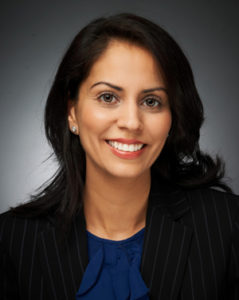By Laura Thill
DSO members are in a unique position to implement cutting-edge technologies in their communities.

As new technology continues to enter the dental industry – and the Internet and social media drive patient awareness – dental support organizations face a growing need to educate their dental members on emerging products and equipment, motivate them to explore it, and provide hands-on training, says Dr. Anna Singh, vice president of clinical training and development, Heartland Dental. “There has to be active participation across all segments, from doctors and team members to admin support, in order to create excitement and buy-in,” she points out.
“With so much technology available, it’s difficult for doctors to know what is truly worth their time and investment,” says Singh. “Heartland Dental’s clinical leadership, procurement and other support teams conduct extensive evaluations on products and technology to determine the value created vs. the investment required. They put in the necessary due diligence, including pilot testing in both companywide and regional formats. From that, we’re able to make educated recommendations and put proven processes and systems in place for supported offices.”
“When communicating at enterprise level it’s important to share the why message and allow people to see the benefit from their own perspective,” she continues. “It’s easy for new technology and equipment to go unused, or not used to full capacity, if supported doctors/teams are not fully educated on what that technology can do for their offices in the long run. It’s all about clear communication and, again, the right education to create buy-in.”
Indeed, it’s a never-ending process, Singh notes. As new technology continues to evolve, dental professionals have more and more opportunities for advancing patient care and experiences. “It’s important for DSOs to recognize this ongoing trend,” she says. “Building good vendor relationships/partnerships is a good way to ensure this. They can serve as a partner in educating doctors and their teams on technology and products.”
Doctor-led culture
 Patients today are better educated about oral healthcare, and they expect a higher standard of care, Singh points out. As such, Heartland Dental looks to offer its dentists cutting-edge technology designed to “increase efficiency and predictability, while creating the best possible experience for patients.” In short, the DSO wants to make sure the offices it supports are leaders in their communities, she adds.
Patients today are better educated about oral healthcare, and they expect a higher standard of care, Singh points out. As such, Heartland Dental looks to offer its dentists cutting-edge technology designed to “increase efficiency and predictability, while creating the best possible experience for patients.” In short, the DSO wants to make sure the offices it supports are leaders in their communities, she adds.
“At Heartland Dental, we put in the time and diligence to learn what works well – what creates value and what does not – from a systems and technology standpoint,” Singh continues. From that perspective, it makes sense to encourage alignment across all of its supported offices. “But we also stay true to our doctor-led culture,” she says.
“Our supported doctors lead their offices and the care they provide,” she says. “It’s our goal to provide the best opportunities, education and support, so they can make informed decisions. We want to provide the right education, so they can learn what benefits and value certain processes or systems will bring them.”
In Singh’s experience, technologies such as intraoral scanners, lasers and clear aligners are becoming more and more commonplace. “Many of our supported offices regularly utilize Invisalign,” she says. “We’re also in the process of rolling out intraoral scanners to supported offices.” Although CAD/CAM has gained popularity in many dental offices, Heartland Dental-supported dentists generally haven’t discovered a need. “That’s not to say CAD/CAM isn’t the right option for others, she says. “It’s an emerging technology, as are implants and digital impressions.”
The process of implementing new technology is key, notes Singh. “We work with our procurement and administrative teams to ensure a smooth rollout of technology and products across our supported offices [to ensure our] doctors and teams are comfortable with these products and understand the value brought,” she says. “This creates a seamless transition, as compared to a standalone office, which may take longer to adopt different or new technology.”
New office tools designed around patient communication, scheduling, billing processes and more are readily available and equally important when it comes to creating ideal patient experiences, she continues. “Tools to monitor patient satisfaction can now be used as well. Heartland Dental-supported offices use Press Ganey to monitor patient satisfaction, as well as a variety of social media channels to communicate,” she explains, adding that such opportunities help “improve all facets of the patient experience – before, during and following their care.”
Dentists today face more competition than ever before, notes Singh. “Today’s patients are more informed, more knowledgeable and, most importantly, have more access to the care they want,” she says. “With a few clicks, they can learn about cutting edge care and easily find providers in their area who offer it.” Dental professionals who do not keep current on the latest technology and offer state-of-the-art care risk losing patients to those who can do so, she points out.
Dentists who do not evolve with the industry will be left behind, making it increasingly important for DSOs to help their supported doctors stay current and communicate regularly with their patients, notes Singh. DSOs can do so by establishing a technology-friendly mindset, she points out. Just as patients expect new technology, many of the new millennial doctors graduating from dental school have that expectation of the group practice or DSO they join. “They have worked with new technology throughout their education, and expect to continue that.”

